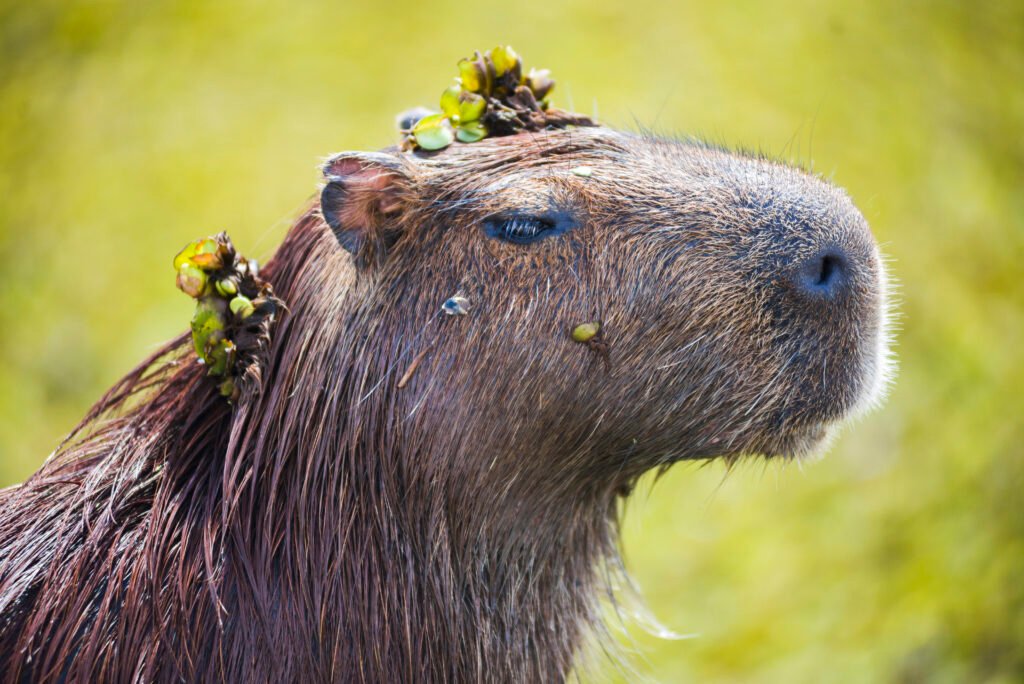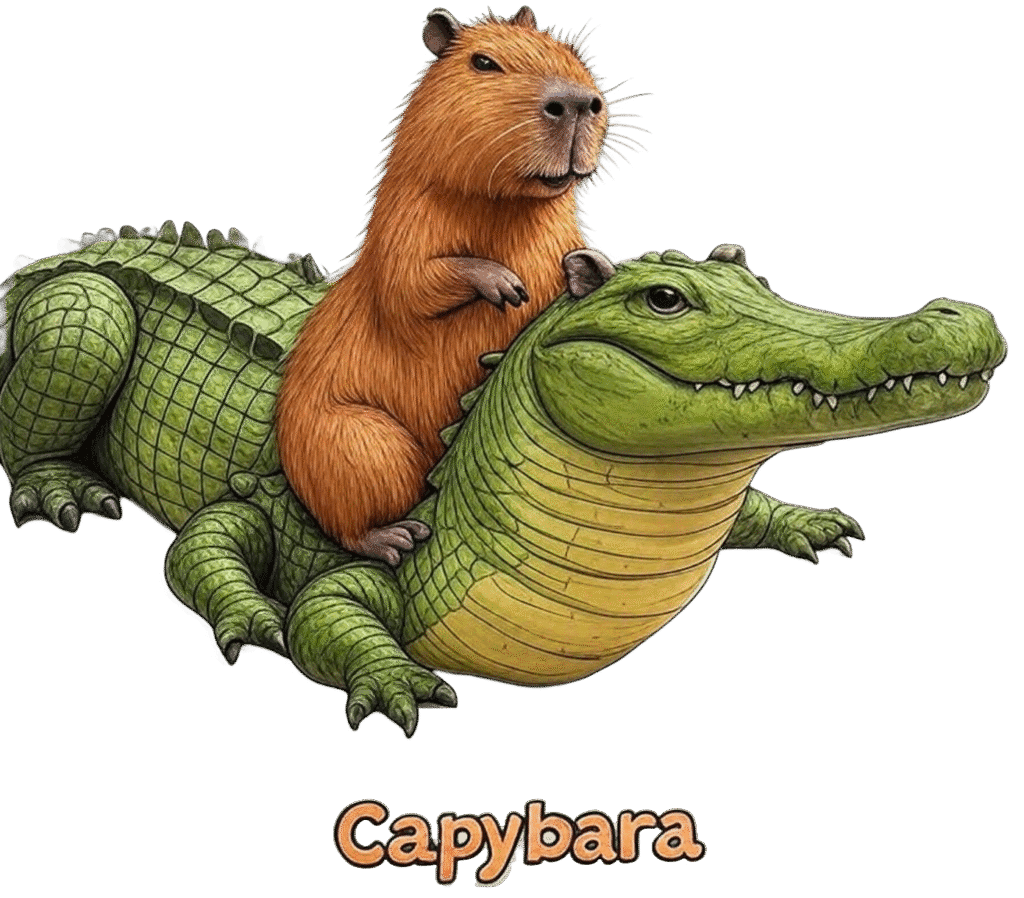Scientific Facts about Capybaras, Biology, Natural History
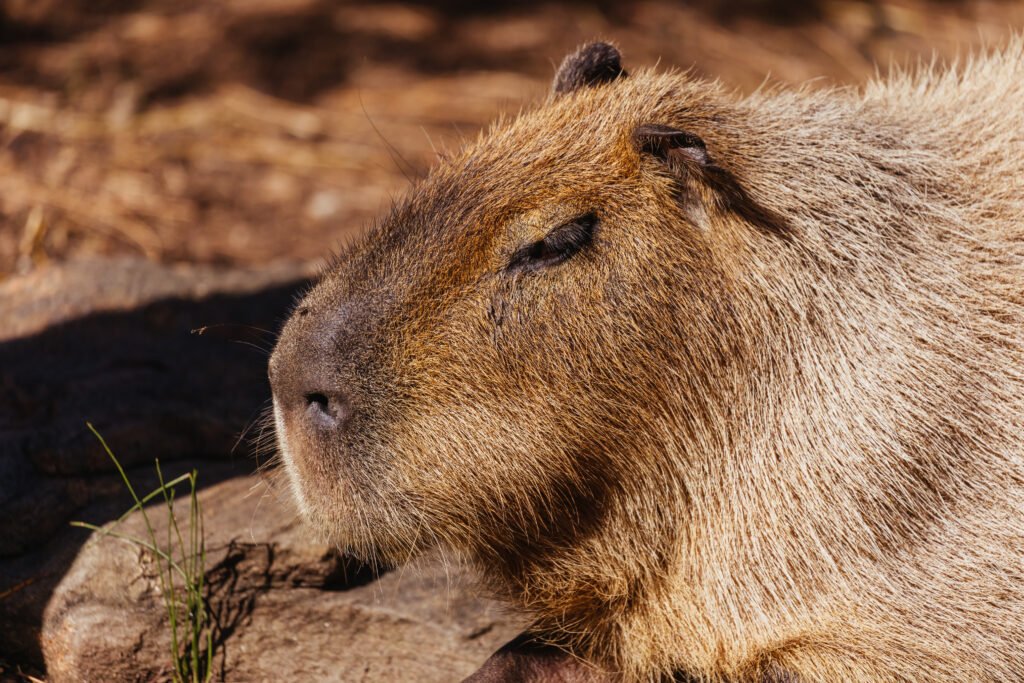
Capybara Biology and Natural History
Capybaras are classified as the largest rodents, closely related to guinea pigs and rock cavies, and more distantly to agouti, chinchilla, and nutria. Their scientific name is Hydrochoerus hydrochaeris.
The capybara, often recognized for its calm demeanor and unique appearance, is a fascinating creature with a rich biology and complex social life.
- Order & Family: They belong to the order Rodentia and are the world’s largest living rodent. They are closely related to guinea pigs and rock cavies, and more distantly to agouti, chinchilla, and nutria.
- Size:
- Weight: Adults typically range from 35 to 66 kg (77-145 lbs), though some individuals can reach up to 79 kg (174 lbs).
- Length: They measure 106 to 134 cm (41-52 inches) in length, with some reaching up to 4 feet (1.2 m).
- Height: They stand around 60 cm (24 inches) at the shoulder.
More Capybara Facts
- They are exclusively found in South America, across a wide range of countries including Panama, Colombia, Venezuela, Guyana, Peru, Brazil, Paraguay, Northeast Argentina, and Uruguay.
- They are strictly semi-aquatic, requiring constant and easy access to water. Favored habitats include flooded grasslands, marsh edges, lowland forests, rivers, lakes, swamps, and marshes.
- They possess a distinctive barrel-shaped body, short legs, coarse brownish fur, and a vestigial tail. Their partially webbed feet are crucial for swimming.
- Their eyes, ears, and nostrils are uniquely positioned on top of their heads, allowing them to remain mostly submerged while observing their surroundings.
- They can hold their breath underwater for up to five minutes, a valuable adaptation for evading predators. Like other rodents, they have continuously growing incisors, which necessitates constant grazing to keep their teeth in check.
- Their skin secretes a natural oil that provides sun protection, an essential feature for their semi-aquatic lifestyle.
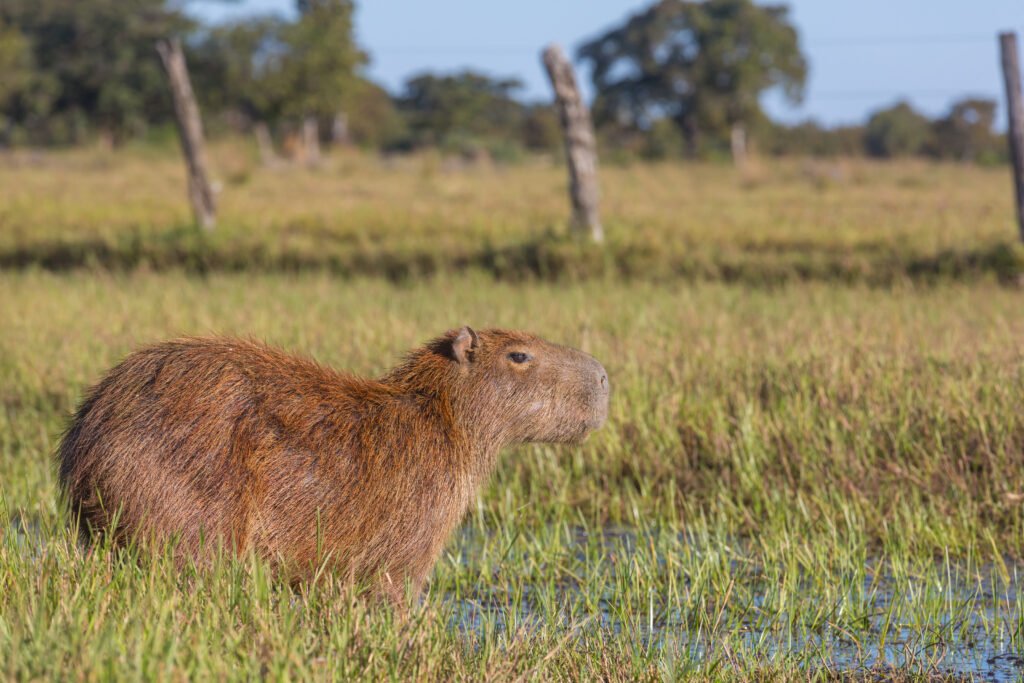

Capybara Habitat, Diet, Feeding Habits and Distribution
- Geographic Range: Capybaras are exclusively found in South America, across a wide range of countries including Panama, Colombia, Venezuela, Guyana, Peru, Brazil, Paraguay, Northeast Argentina, and Uruguay.
- Preferred Habitat: They are strictly semi-aquatic, requiring constant and easy access to water. Favored habitats include flooded grasslands, marsh edges, lowland forests, rivers, lakes, swamps, and marshes
- Herbivores: Capybaras are primarily grazers, feeding on grasses and aquatic plants. They also occasionally consume fruit, tree bark, seeds, grains, and nuts
- Dietary Adaptations: They are selective feeders and adapt their diet to eat a greater variety of plants during the dry season when fewer preferred plants are available
- Autocoprophagy: A notable dietary habit is autocoprophagy (eating their own feces) to re-digest cellulose, extract maximum protein and vitamins, and replenish bacterial gut flora essential for digestion. They also regurgitate food to masticate again, similar to cud-chewing cattle.
Capybara Reproduction and Life Cycle
- Mating: Reproduction is polygynous to promiscuous, with mating occurring exclusively in water. Females exhibit mating choice, submerging or leaving the water if they do not wish to mate with a particular male.
- Gestation: Gestation periods range from 130-150 days (or 5-6 months). Wikipedia
- Litter Size: Litter sizes typically range from 2 to 8 young, with an average of 4.
- Young: Young are precocial, meaning they can stand and walk shortly after birth and begin grazing within a week. Pups nurse for approximately three months and generally stay with their natal group for about one year.
- Maturity: Both sexes reach sexual maturity around 18 months of age
Page Last Updated: August 8, 2025
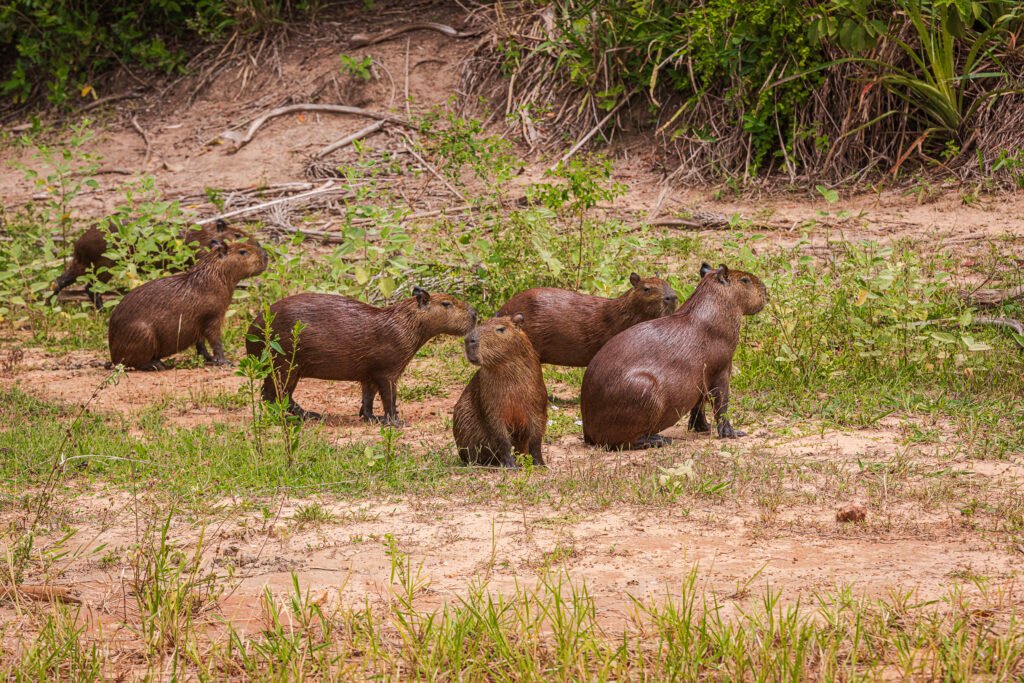
Capybara Behavioral Insights and Social Dynamics
- Social Structure: Capybaras are highly social and gregarious animals, typically living in groups of 10-20 individuals. Group sizes can range from 3 to 30, and larger aggregations of 50-100 often form around dwindling water resources during the dry season. Solitary capybaras are rarely observed.
- Survival Strategy: Group living is paramount for their survival, providing crucial protection from predators, access to optimal grazing habitats, and opportunities for finding mates.
- Predators: Their natural predators include jaguars, anacondas, caimans, pumas, ocelots, eagles, and boa constrictors.
- Defense Mechanisms: They bark to warn the group of danger, often prompting the entire group to rush into the water for safety.
- Communication: Capybaras utilize a variety of vocalizations, including whistles, purrs, and clicks, each with specific meanings to help them stay connected within their group. Scent communication is also vital; males possess a morillo gland on their snout that secretes a white liquid, acting as an olfactory "fingerprint" indicating status, which is rubbed on trees to mark territory or on their body to advertise mating willingness.
- Interspecies Friendliness: A standout characteristic is their propensity for forming "close bonds with a wide variety of animals," including monkeys, birds (frequently seen riding on their backs), ducks, dogs, turtles, cats, and even crocodiles. They have earned the affectionate nickname "nature's ottoman" due to these mutualistic relationships
Capybara Ecosystem Role and Conservation Status
- Ecosystem Engineers: Capybaras are recognized as “ecosystem engineers” due to their significant impact on their environments. Their grazing habits help manage vegetation, shaping plant communities in their wetland habitats. The paths they create can regulate water flow and provide new channels for other wildlife. Their droppings also act as a natural fertilizer, enriching the soil and promoting plant growth.
- Conservation Status: While currently classified as “Least Concern” on the IUCN Red List of Threatened Species, their populations are not entirely secure.
- Threats: They face threats from habitat destruction and the drainage of wetlands. They are also threatened by illegal hunting for their meat and hide (valued for leather), and for grease from their fatty tissue (used in pharmaceuticals). In some regions, such as Peru and Bolivia, capybaras are hunted for use as bait. Deforestation also poses a threat to these rainforest inhabitants.
- Conservation Efforts: Joint conservation efforts, including those by zoos and organizations like WWF, are critical in ensuring their continued survival.
